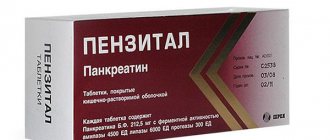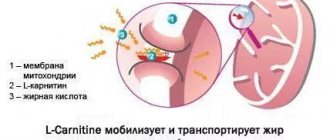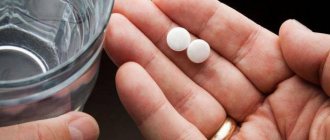DTP is a mandatory vaccination in childhood. For the first time it is done to three-month-old babies. It is also indicated for adults, since it does not form lifelong immunity from the infections it contains.
DTP vaccination is a cause of concern for many parents. There is an opinion that it is difficult to tolerate and that some children should receive complete medical treatment from it. It is believed that imported DTP is perceived better, so it should be preferred to domestic one. Which of this is true and which is not worth believing, we asked the leading pediatrician at the Medsi children's clinic on Pirogovskaya Madina Abdulaeva .
What is the DPT vaccine for?
DTP vaccination is an adsorbed pertussis-diphtheria-tetanus vaccine. All three diseases that it protects against are caused by bacteria that produce toxins and attack the human body. Vaccination cannot protect against bacterial infection - it is aimed at neutralizing toxins.
Vaccine composition
The DPT vaccine contains components of three bacteria: Bordetella pertussis (causes whooping cough), Corynebacterium diphtheriae and Clostridium tetani (causes diphtheria and tetanus, respectively).
The pertussis component of the vaccine is represented by whole microbial cells, previously “killed” by formaldehyde. To protect against diphtheria and tetanus, the vaccine includes separate purified diphtheria and tetanus toxoids, which are obtained from the bacteria that cause these diseases. Thus, DTP is an inactivated vaccine. It may not provide as much protection as live, attenuated vaccines such as the measles vaccine, so it must be given multiple times.
Aluminum salts are added to DPT as an immune response enhancer (adjuvant). Antigens adsorbed on them provoke the development of humoral immunity.
Many people are afraid of the DPT vaccine because of its high reactogenicity. This is due to its pertussis component – whole cells of Bordetella pertussis. If for some reason your child cannot receive DPT, vaccination against diphtheria and tetanus can still be done. For this purpose, there are separate preparations of toxoids: AS - tetanus toxoid, AD - diphtheria toxoid and ADS - diphtheria and tetanus toxoids without pertussis component. Of course, ADS vaccination is more convenient, because then you will have to give fewer injections when receiving subsequent doses.
Whooping cough
Whooping cough is an infectious disease transmitted by airborne droplets. It manifests itself as a prolonged, intense, obsessive cough. The incubation period for whooping cough lasts from 1 to 2 weeks. After the disease develops, the patient can be a source of infection for up to a month. In addition, asymptomatic carriage is possible.
In children under one year of age, whooping cough infection often leads to attacks of respiratory arrest. And against this background, complications develop from the nervous and cardiovascular systems. In older children, the disease begins with the symptoms of a common cold: fever, runny nose, cough, redness of the throat. Then a long, painful paroxysmal cough develops. Attacks are sometimes accompanied by vomiting, hemorrhages in the skin of the face and conjunctiva, saliva and lacrimation, and swelling of the veins of the neck. This cough can last up to six months.
Antibacterial drugs are used to treat whooping cough. However, they can be effective only in the initial period, when whooping cough is almost impossible to distinguish from other acute respiratory viral infections. During the period of paroxysmal cough, antibiotic therapy is not effective. Treatment is carried out symptomatically and has virtually no effect on the duration of the cough.
Whooping cough is extremely contagious. It affects up to 95% of unvaccinated contacts. Even now, against the backdrop of universal vaccination, cases of whooping cough are not uncommon. The disease is especially dangerous in children who have not yet had time to get vaccinated for some reason.
Vaccination schedule
DTP vaccination is included in the National Preventive Vaccination Calendar. The vaccination course consists of three vaccinations:
- at 3 months,
- at 4.5 months,
- at 6 months.
Then at 18 months, revaccination is carried out. If the schedule was violated, the doctor waits 12–13 months after the last DPT vaccination. If the DPT vaccine was not administered at all, the age of the child matters:
- if the child is under 3 years 11 months 29 days, DPT is administered;
- if older, but not yet 6 years old, the pertussis component is excluded and ADS toxoid is administered;
- for children over 6 years of age, ADS-M toxoid is used, in which the content of diphtheria toxoid is reduced.
Important! According to the vaccination schedule, children at 6-7 and 14 years of age must undergo a second and third revaccination against diphtheria and tetanus using toxoid preparations with a reduced content of the diphtheria component (ADS-M). In the future, revaccination against these diseases is carried out for all adults once every 10 years.
Revaccination of older children and adults against whooping cough is not carried out in Russia, although vaccination with acellular whooping cough vaccines is widely practiced abroad in children and adolescents, as well as pregnant women, starting from the 26th week of pregnancy, which helps protect infants under 3 months from the disease (for vaccination of older children age and adults use special preparations with a reduced content of diphtheria toxoid).
Pharmacodynamics and pharmacokinetics
DTP vaccination - what is it? Wikipedia provides the following explanation of DPT: an adsorbed vaccine for the prevention of whooping cough , tetanus and diphtheria , consisting of killed microbial cells of the whooping cough bacillus and purified diphtheria (Anatoxinum diphthericum) and tetanus (Anatoxinum tetanicum) toxoids sorbed on aluminum hydroxide .
Vaccination in accordance with the approved vaccination schedule contributes to the formation of specific immunity against diphtheria (Diphtheria), tetanus (Tetanus), and whooping cough (Pertussis) .
The pharmacokinetics of the drug have not been described.
Preparing a child for vaccination
Before vaccination, children are always examined by a pediatrician.
Photo: AllaSerebrina / Depositphotos The vaccine is administered intramuscularly; the procedure does not require any special preparation. However, DPT has contraindications. Some are worth paying attention to, others only create false impressions about the vaccine.
True contraindications include:
- allergy to vaccine components, which manifests itself in a strong general reaction or complications after the previous administration. These include: the first two days, temperature above 40 ℃, swelling more than 8 cm in diameter, developed Guillain-Barré syndrome (autoimmune disease);
- severe immunodeficiency;
- convulsions/fits and other diseases of the nervous system in a progressive process.
What conditions cannot be exempt from vaccination?
False contraindications to DTP vaccination:
- acute diseases (4 weeks after recovery), mild respiratory diseases (2 weeks after);
- chronic diseases (the main thing is to wait for remission);
- diathesis (beyond exacerbation);
- weight loss, prematurity;
- allergic diseases: local rashes, spasm of the respiratory tract with cough (bronchospasm);
- taking antibiotics;
- convulsions/allergic reactions to DTP in relatives.
Instructions for use of the vaccine
What is the DTP vaccine for and where is the injection given?
Many parents, along with what the DPT vaccine is for, are also interested in the question “where is the injection given?” The adsorbed DTP vaccine is administered exclusively intramuscularly. Previously, the injection was given into the gluteal muscle, but the structure of the child’s buttocks is such that there is a fairly large layer of fatty tissue there.
The penetration of the suspension into adipose tissue provokes the formation of a long-absorbing infiltrate and reduces the effectiveness of vaccination.
Currently, the vaccine preparation is injected into the anterior outer part of the child's thigh. Children over one and a half years old are vaccinated in the deltoid muscle (in the upper third of the shoulder). A child over 7 years old is allowed to inject the suspension under the shoulder blade (in this case, special needles are used for hypodermic injections).
How many times is DTP vaccination given?
The primary immunization regimen involves the administration of 3 doses of the vaccine, which are administered to the child in the first year of life. A healthy child under 12 months of age who has no contraindications to vaccination is administered the DTP vaccine at 3, 4.5 and 6 months (the interval between injections must be at least 30 days). Next, revaccination is carried out.
It is unacceptable to shorten the intervals between vaccine administrations.
Timing of DPT revaccination
What is revaccination and how many times is revaccination done? Revaccination is an event whose purpose is to maintain the immunity that has developed after previous vaccinations.
DPT revaccination is carried out once every 1.5 years. If the timing of vaccination has been changed, 12-13 months after the child receives the third vaccine dose of the drug.
Preparing for vaccination
There are several recommendations on how to prepare for vaccination so that your child can handle it as easily as possible.
Mandatory conditions for successful immunization are the child’s good health (including on the day of vaccination), high quality of the vaccine preparation and compliance with the vaccination conditions.
Komarovsky recommends before vaccination:
- reduce the load on the child’s intestines (that is, limit the amount and concentration of food the child receives);
- make sure that the child has a bowel movement within 24 hours before vaccination (if there is none, before going to the clinic, you should give the baby a glycerin suppository or do a cleansing enema);
- Do not give vitamin D ( vitamin D is responsible for regulating Ca metabolism in the body, and Ca metabolism disorders underlie the development of allergic reactions; therefore, even a slight overdose of vitamin D can cause the child to tolerate vaccination less well);
- to reduce the risk of allergic reactions , 3 days before the vaccine is administered (and for 3 days after it), give the child calcium gluconate (1 tablet per day);
- if the pediatrician insists on taking antihistamines , they should be taken in combination with calcium gluconate ;
- do not feed an hour before vaccination and as long as possible after it (it’s good if you can wait 3 hours);
- avoid fluid deficiency (including not dressing the child too warmly so that he does not sweat or lose fluid before vaccination);
- Do not introduce new products for several days.
DTP analogues
Due to the frequency and severity of side effects associated with DTP, new, acellular drugs (ACDs) became widespread in the mid-1990s. All of them, like DPT, are combined with diphtheria and tetanus toxoids, but instead of whole pertussis bacteria they contain only individual pertussis antigens. Such vaccines are better tolerated and have completely replaced the DPT vaccine in many countries with a low risk of whooping cough infection. Many of the new cell-free drugs protect against 5 or even 6 infections at once:
- Infanrix hexa (6 infections, including hepatitis B, polio and Haemophilus influenzae),
- Pentaxim (5 infections, including polio and hemophilus influenzae),
- Tetraxim (4 infections, including polio).
Among the three-component BCVs: Infanrix for children and Adasel for adults (this vaccine has a reduced amount of diphtheria toxoid).
However, experts believe that the whole-cell vaccine protects better - there are more antigens, and the immune response is closer to natural infection. If we compare acellular vaccines, those with more pertussis antigens protect better.
When choosing between whole-cell drugs, in addition to DPT, you can pay attention to four-component ones, which also protect against hepatitis B.
Benefits of ADS vaccine
The main advantages of ADS vaccination include:
- creates reliable immunity against two infectious diseases simultaneously;
- upon contact with an infected person or if soil gets into an open wound, the vaccine is used as an emergency aid (in the first 20 days);
- revaccination creates a high concentration of toxoid in the body;
- If you compare this vaccine with DPT, the risk of severe adverse reactions is much lower.
Simultaneous immunization with ADS and chickenpox vaccination is acceptable.
Which vaccine is better to choose?
Both domestic and foreign vaccine preparations against whooping cough are presented on the Russian market.
Photo: TTK TV channel In Russia, people are vaccinated with whole-cell DPT produced by the Federal State Unitary Enterprise NPO Microgen of the Russian Ministry of Health. Foreign acellular vaccines are also available:
- Belgian "Infanrix"
- French "Tetraxim" from SANOFI PASTEUR,
- French "Pentaxim" from SANOFI PASTEUR.
The Russian inactivated combined vaccine “Bubo-Kok” produced by CJSC NPK “Combiotech” also protects against hepatitis B. The first Russian 5-valent vaccine “aDTaP-HepB+Hib” or pentovaccine produced by FSUE “NPO Microgen” is already available. It protects against five common childhood infections: diphtheria, whooping cough, tetanus, hepatitis B and Haemophilus influenzae.
Pertussis vaccine for adults
Until recently, there were no pertussis vaccines for adults in Russia.
However, in 2021, the drug “Adasel” produced by SANOFI PASTEUR appeared on the domestic market (Fig. 1). This is an acellular vaccine with a reduced content of diphtheria component. The US Centers for Disease Control and Prevention (CDC) recommends giving Adasel to adults as a booster dose to re-prime the body's immune response. The drug can also be administered to children, but again for revaccination, and not as a first dose. Pregnancy is not a contraindication for vaccination. The CDC offers pregnant women the same acellular Adasel. It is introduced at the beginning of the third trimester. In Russia, such vaccination is not practiced, although studies indicate there is no evidence of a risk to pregnancy. In America, this drug is administered before each pregnancy, even if there is a year or two between them. Children in the first months of life are susceptible to whooping cough; if the mother has not been vaccinated, they are defenseless against infection.
Figure 1. Adasel vaccine. Source: NSW Health
What to do after vaccination
It is important to monitor the condition of the body after vaccination. Their parents do this for their children. Mild side effects are more likely a good sign that the body has begun to work on its immune response. It is necessary to spend at least half an hour near the vaccination room in case of unexpected severe reactions.
The main thing is not to panic when normal passing reactions appear. You can ask your doctor in advance about antipyretic and antihistamine medications for children. On the 3rd day after vaccination, the appearance of any reactions is uncharacteristic.
special instructions
How does DTP stand for?
Parents of young children who are faced with vaccination for the first time quite often have questions “What is DTP?” In international nomenclature, the vaccine is known as DTP. Decoding DTP (DTP) is quite simple: adsorbed vaccine for the prevention of Diphtheria (diphtheria), Tetanus (tetanus), Pertussis (whooping cough) .
What kinds of vaccines are there and which vaccine is better?
The DTP vaccine is used to prevent diphtheria, whooping cough and tetanus in children under four years of age. Today, in clinics and vaccination centers, along with the domestic DTP drug, more modern imported vaccines are often used.
Some of them, like DTP, are three-component, while others allow immunization, including against polio, Haemophilus influenzae and hepatitis .
For example, the drug Pentaxim is DTP in combination with inactivated polio viruses (IPV) types 1-3 and HIB infection; Tetrakok is DTP in combination with IPV; Tritanrix-HB is a DPT in combination with recombinant surface antigen of the hepatitis B virus .
As an alternative to DTP, the doctor may advise the child's parents to introduce a foreign analogue registered in the country - for example, Bubo-Kok , Tetrakok or Infanrix .
the pertussis component in DTP is present in an undigested form (the suspension contains inactivated (killed) pertussis bacillus ), the drug belongs to the category of whole-cell vaccines .
Undivided microbial cells represent a whole set of substances foreign to the child’s body, so the reaction to the DTP vaccine often occurs quite violently (as well as to the drug Tetrakok , which is also a whole-cell vaccine ).
Unlike these products, in the Infanrix and Pentaxim the pertussis component is represented only by the main elements (fragments) of the microbe Bordetella pertussis.
These drugs induce the same level of immunity as their whole-cell analogues, however, they produce significantly fewer reactions.
Therefore, if parents have the opportunity to choose which is better to vaccinate - DTP or Infanrix , DTP or Pentaxim - it is better to give preference to a foreign drug.
Additional recommendations for vaccination
Persistent symptoms of an allergic disease are not contraindications to vaccination. DTP injection is permitted against the background of appropriate therapy.
Children whose weight at birth did not exceed 2 kg, with normal psychomotor and physical development, are vaccinated according to the standard schedule. Low body weight is not a reason to delay immunization.
It is prohibited to administer the suspension:
- from ampoules with no markings;
- from ampoules with damaged integrity;
- if the drug is expired or stored incorrectly;
- if the drug has changed its physical properties (if flakes that do not develop have appeared in it or it has changed color).
The vaccination procedure (including opening of ampoules) is carried out in strict compliance with the rules of asepsis and antiseptics. After opening the ampoule, the unused drug must be disposed of.
The administration of the vaccine must be registered in the established accounting forms, indicating the date of administration, the expiration date of the suspension, the batch number, the manufacturing company, and the characteristics of the reaction to the administration.
Is it possible to wet the DPT injection site?
When a DPT injection is given, parents are warned that the child should not be bathed for some time. On Dr. Komarovsky’s website it is written that one should refrain from bathing only on the day of vaccination (theoretically, it is considered possible for a child to be infected through an injection wound), after which the child is bathed as usual.
If after vaccination parents wet the injection site, it’s not a big deal.
If the temperature rises, bathing is replaced by wiping with wet wipes.
What not to do after DTP vaccination
It is better not to engage in physical activity, because an enemy has entered the body, albeit inactivated. The body’s task is to develop cells that will resist this enemy. Therefore, in the first few days you should ensure yourself peace. However, if the child feels well, then walking is not contraindicated.
It is also not recommended to change the diet of a child or a nursing mother. This can lead to additional stress on the intestines, and therefore on the entire body.
Complications after vaccine administration
DTP vaccination can cause prolonged crying in children.
Photo by Laura Garcia: Pexels Complications after vaccination that require seeking medical attention include:
- allergic rash (not local),
- more than 3 hours of uncontrollable screaming and crying,
- swelling of the face and throat,
- labored breathing,
- cardiopalmus,
- dizziness, nausea and weakness.
In the 1970s, the use of whole-cell DTP vaccine was associated with encephalopathy in children. However, numerous studies have proven the absence of this connection.








